Tok Pisin: Karuka
Scientific name: Pandanus jiulianettii
Two species of pandanus are commonly used for the nuts that are eaten. They are Karuka (Pandanus jiulianettii Martelli) and wild Karuka (Pandanus brosimos Merr & Perry). At least 3 other species of pandanus are used occasionally in Papua New Guinea for edible nuts and marita pandanus is used for the long red fruits. The leaves of many other pandanus species are used for rain capes, sleeping mats, canoe sails etc. This article is about cultivated Karuka.
The Karuka plant
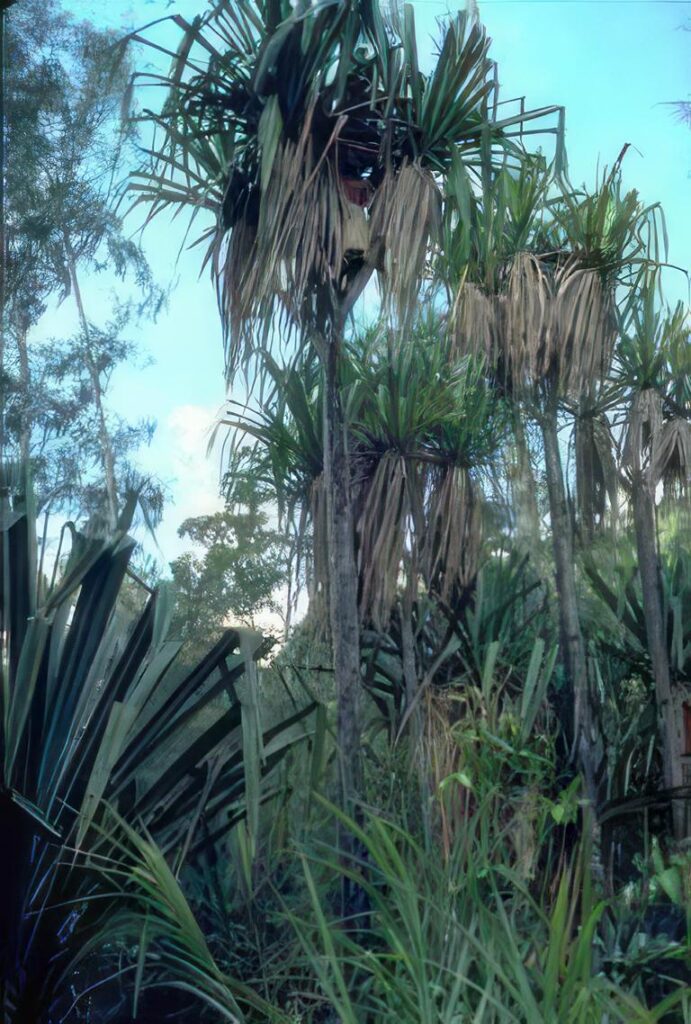
The Karuka tree is a tall palm like tree with a straight trunk and aerial prop roots at the base. Sometimes it branches near the top to produce 3 or 4 crowns of leaves. The leaves grow in pairs opposite each other, and they are twisted to look like a spiral going up the trunk. The leaves are long (3 m), narrow, have spikes along the edges and are often bent at the tips.
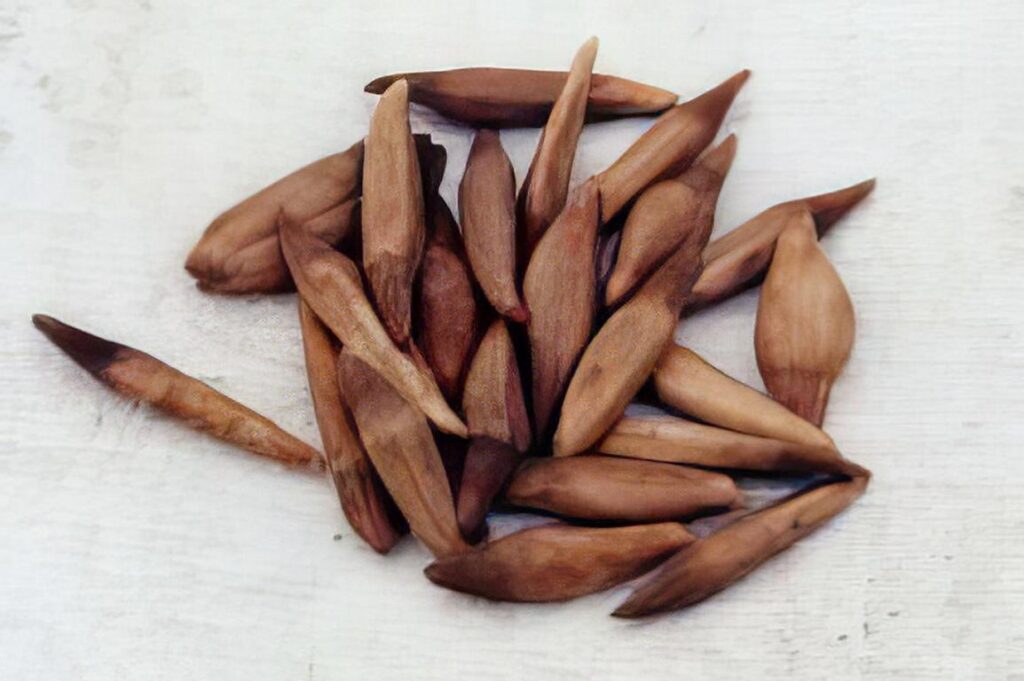
The fruit is a round composite fruit 15 to 30 cm across which is made up of about 1,000 individual keys which contain the nut which is eaten. Karuka trees have male and female flowers separately on separate trees. Male trees produce a white flower but no fruit. They are not very common.
Where does Karuka grow?
Karuka grows in several highland provinces of Papua New Guinea. It mainly grows at altitudes between 1800 metres and 2500 metres above sea level. Outside this range, it often does not grow well. Karuka is only grown in Papua New Guinea.
Within these areas, Karuka has a special place where it grows best. Karuka needs fairly good soil fertility, so it does best along the banks of small creeks, in the natural hollows that occur around the edges of hills, and around the edges of small clearings in the bush. Lots of Karuka are seen out on knobs in the grassland but often these only bear small nuts. Some areas produce good Karukas, while Karuka grows poorly in other places. In some places, Karukas are grown in lines as boundary markers between garden plots.
The Karuka fruit and nut
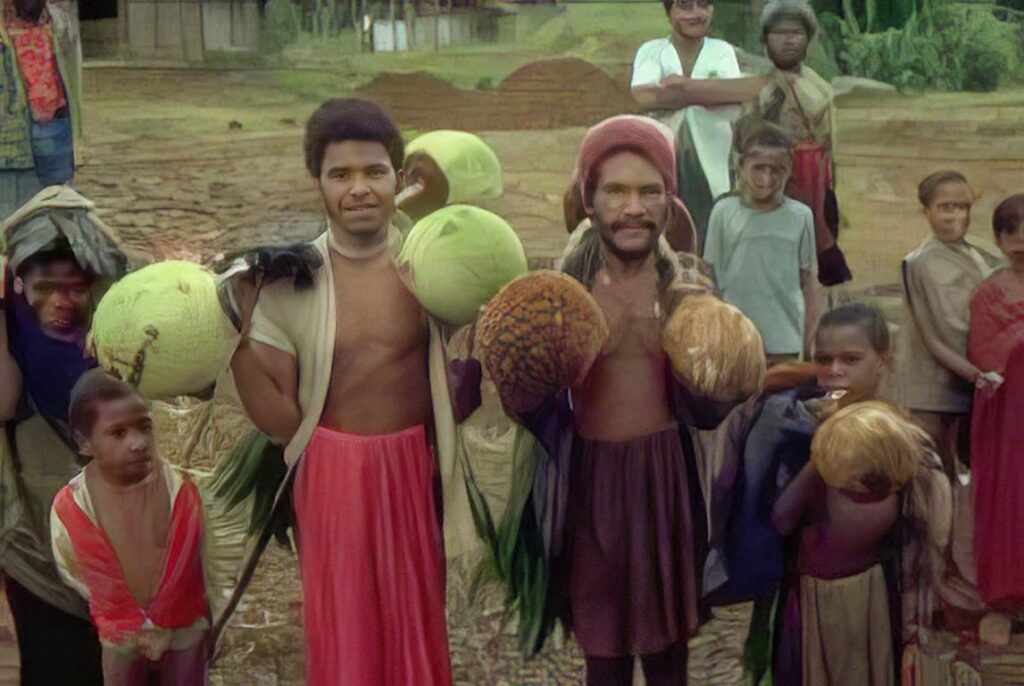
One crown of leaves on the one branch of a Karuka tree normally only produces one cluster of nuts (called a syncarp) during one season. That particular branch normally only produces one bunch every second year.
On a branch that is about to bear fruit, the leaves are upright and clumped slightly together. The fruit bunch emerges from the centre of these leaves. It hangs close to the trunk amongst the dead hanging leaves. Large leaves (bracts) almost cover the fruit bunch while it hangs there.
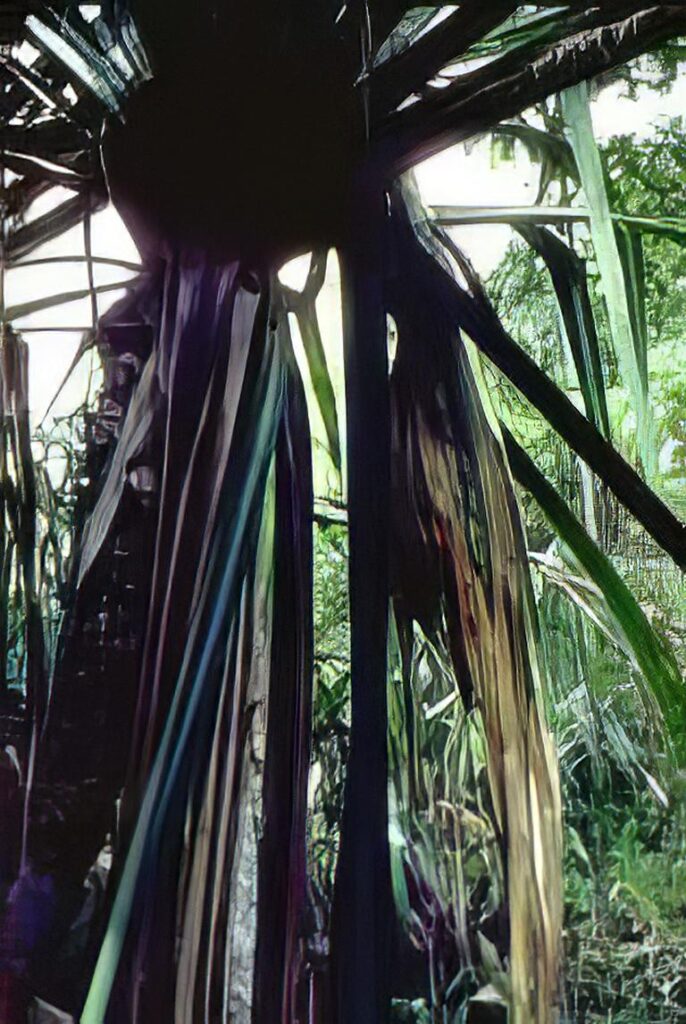
While the fruit is being produced, the tree stops producing new leaves. A new sprout of leaves eventually shoots up in the centre of the clump and this is normally taken as a sign that the nuts are ready to harvest. The whole bunch is normally cut down with a bush knife. Often the tree has to be climbed to do this.
The outside layer of the fruit is burnt off, in a fire. This allows the bristly ends of the individual keys to be seen.
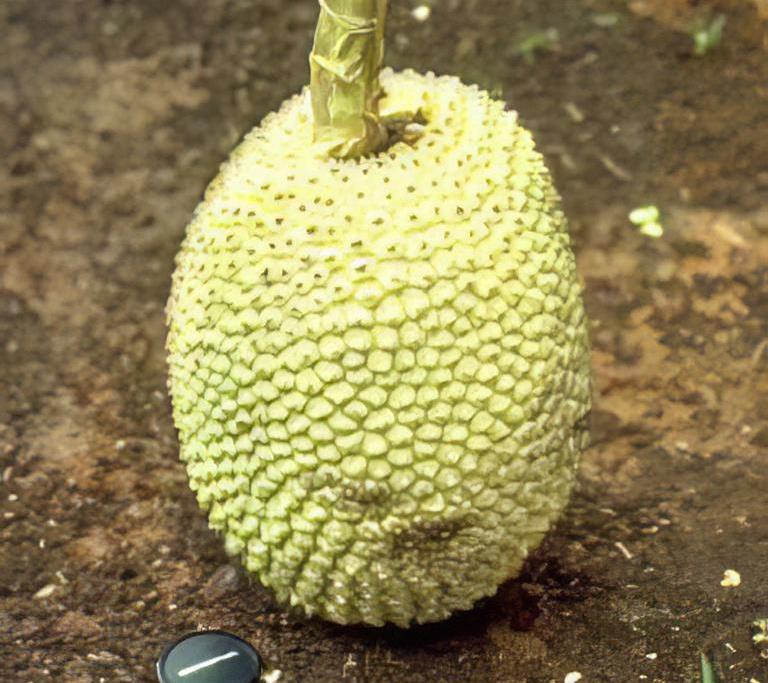
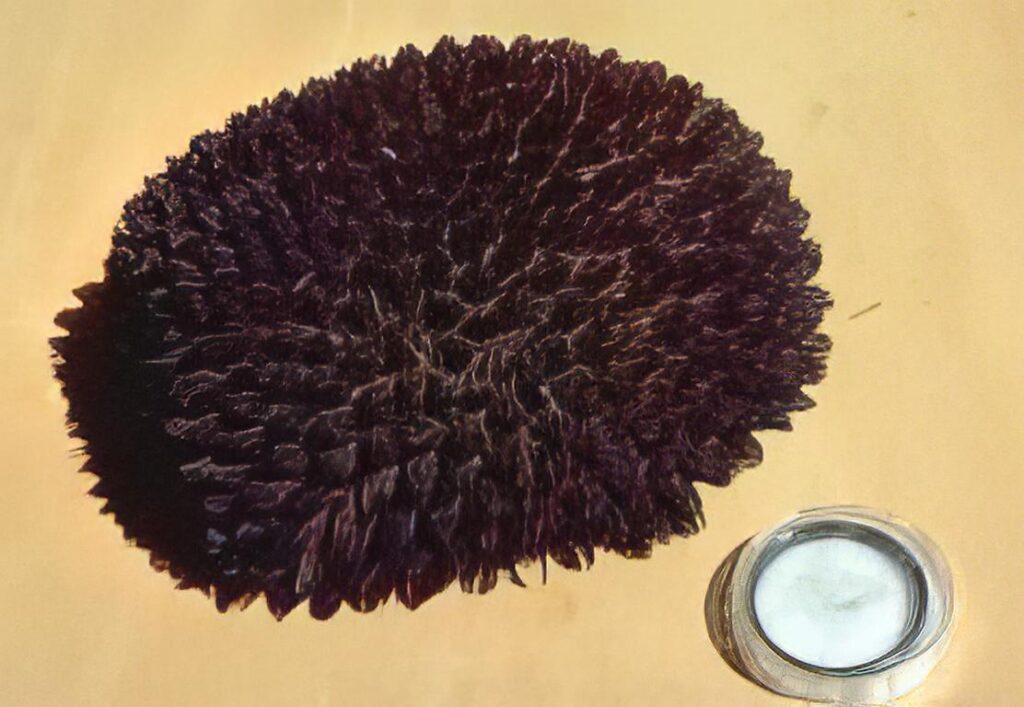
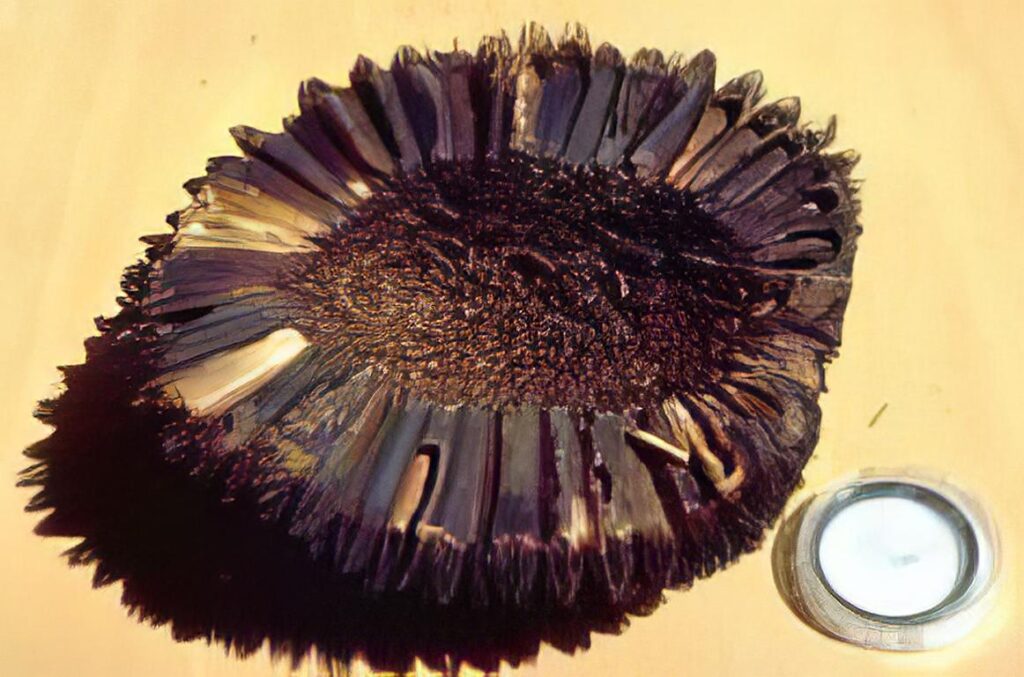
In the centre of the bunch is the stalk. This is surrounded by a spongy type of material into which the ends of the individual nuts are inserted. This spongy layer (the mesocarp) has an appearance like honeycomb when it is separated from the nuts. It can be cooked and eaten.
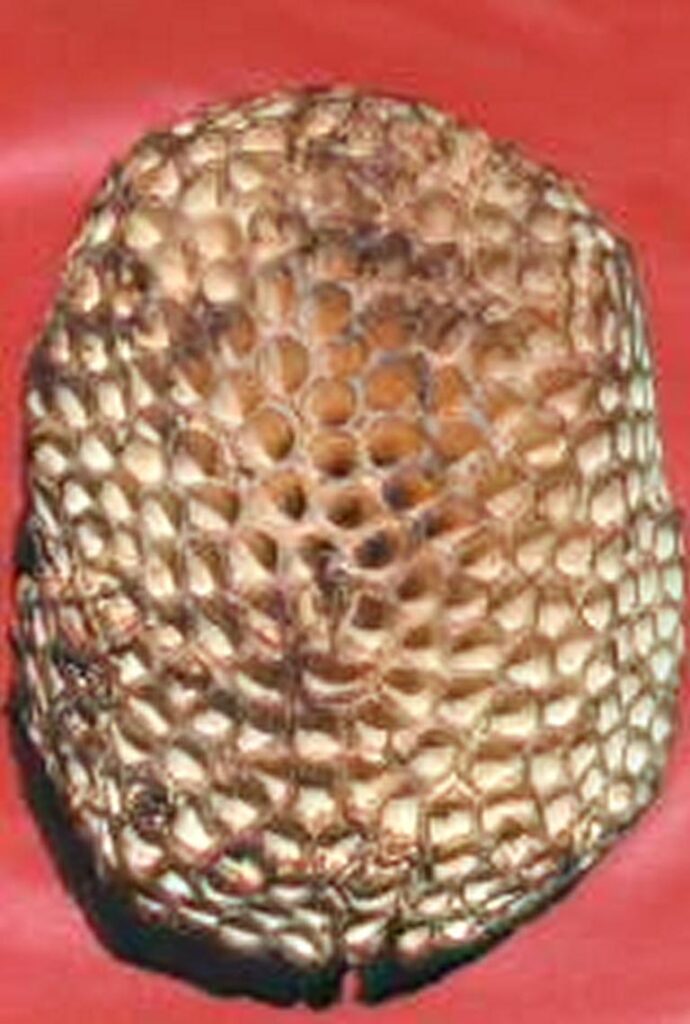
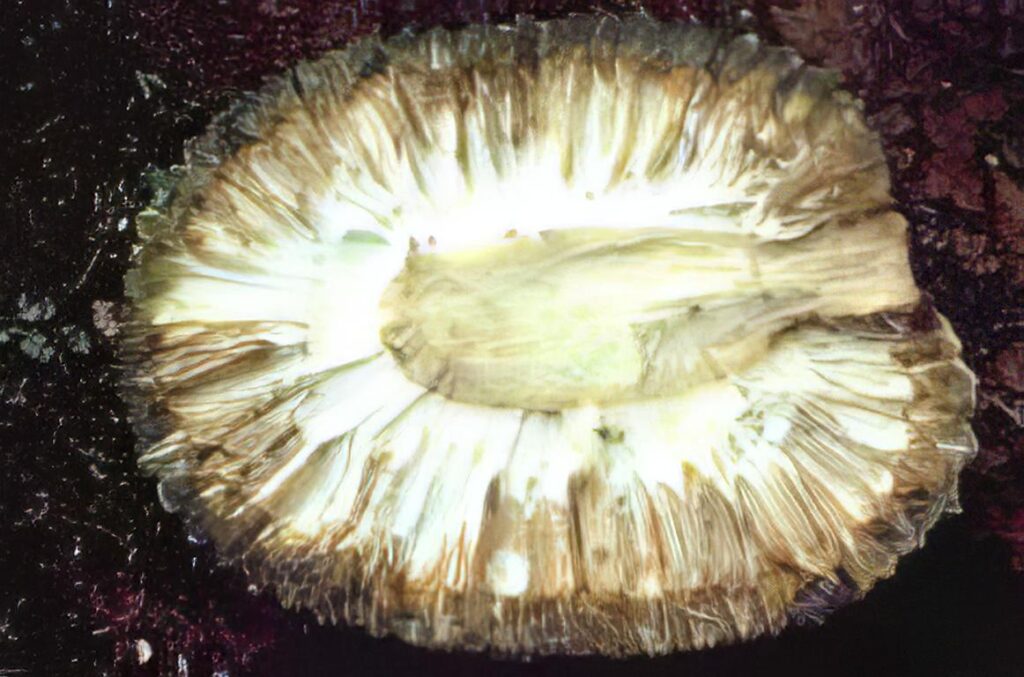
A fruit cut in half. The individual keys or nuts can then be separated and broken open to get out the kernel that is eaten.
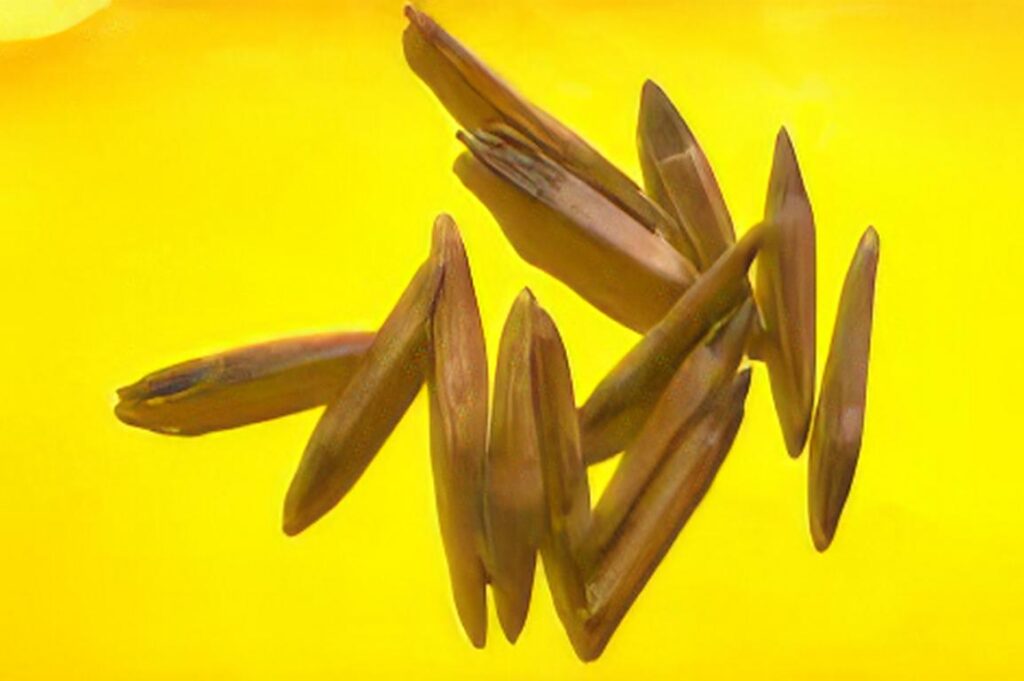
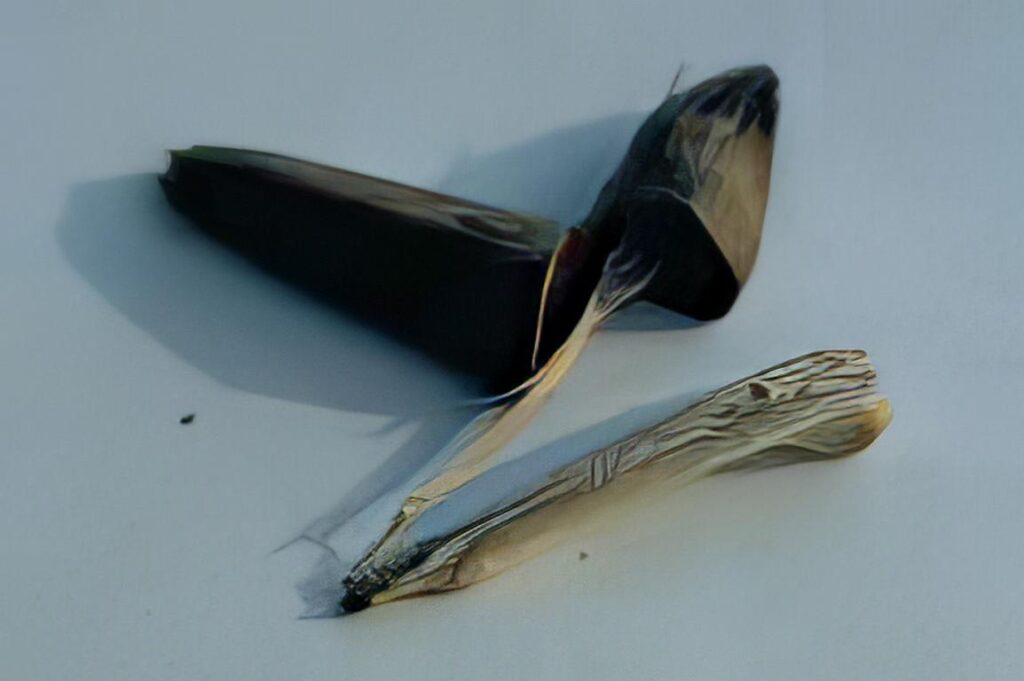
A single shell and kernel look like this.
How do you plant Karuka?
There are some different ways of planting Karuka.
One of the common ways is to cut the top section off one branch of a mature tree that has several branches. When planted in moist fertile soil it quickly develops roots and becomes established. This method has two advantages. You can be sure that the new tree will be the same as the old one because it is vegetative propagation. Also, old trees with several branches tend to have smaller clusters of fruit because the fruit is competing with the same plant for their requirements.
Sometimes Karukas develop young suckers or shoots near the ground. When these are seen, they are broken off and replanted.
Karuka can be grown from seeds. It is best to wait till the nuts are fully ripe and start falling naturally from the tree. These nuts are taken and planted while fresh. They are planted in the shell with the bristles uppermost.
Normally the seeds are established in a nursery and then transplanted to their permanent sites a few months later. Karukas can start to produce nuts 5 or 6 years after planting. They can keep producing for probably 50 years. To produce good-sized nuts the Karuka plantation needs to be kept free of weeds.
Varieties of Karuka
There are many varieties of Karuka. Up to 20 varieties are maintained by some growers. One farmer near Paip in the Mendi Valley knew 35 varieties. One of the most noticeable things that varies is the shape of the nut and kernel. Two kinds are drawn below.
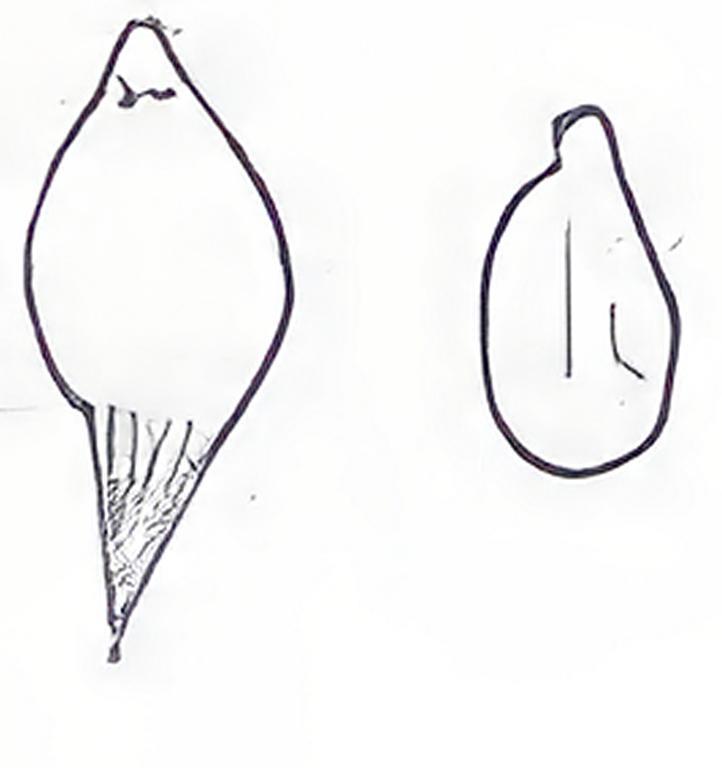
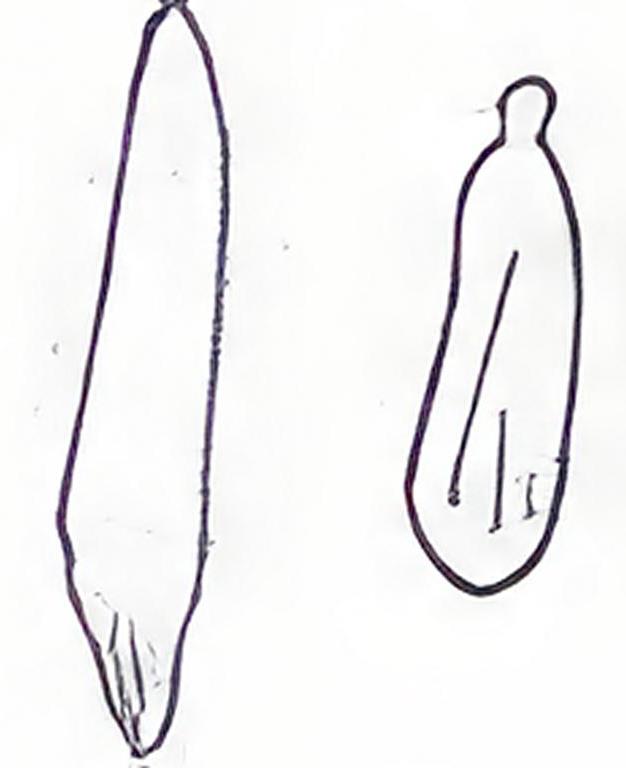
Most varieties are roasted before eating but one or two varieties are eaten uncooked. All varieties can be mumued (Polynesian way of cooking food with hot stones in a hole underneath a fire), as well as smoked and stored.
All varieties tend to fruit at the same time, but some kinds get ready to harvest more quickly than others.
Varieties differ in their height, number of branches, thickness of the shell of the nut, and a little bit in their general appearance and colour of leaves and bark.
Pests and Diseases
Karukas have some pest and disease problems.
Diseases
At least 4 different kinds of fungal diseases can be seen damaging the leaves. There is a sooty mould that makes irregular black patches over the surface of the leaf. It is only growing on the rubbish left on the leaf surface by small insects. Another black leaf mould grows in thin straight streaks along the middle of the leaves. It only seems to grow on some varieties and village people seem to use it as one indicator to help them recognize the different varieties. These two diseases probably do not cause too much trouble.
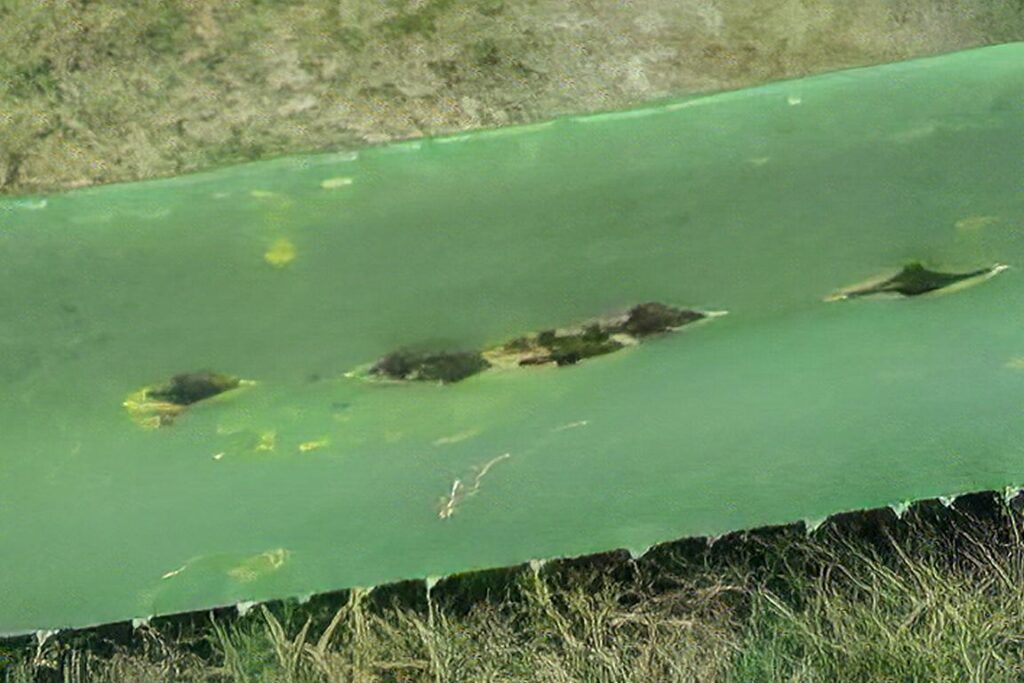
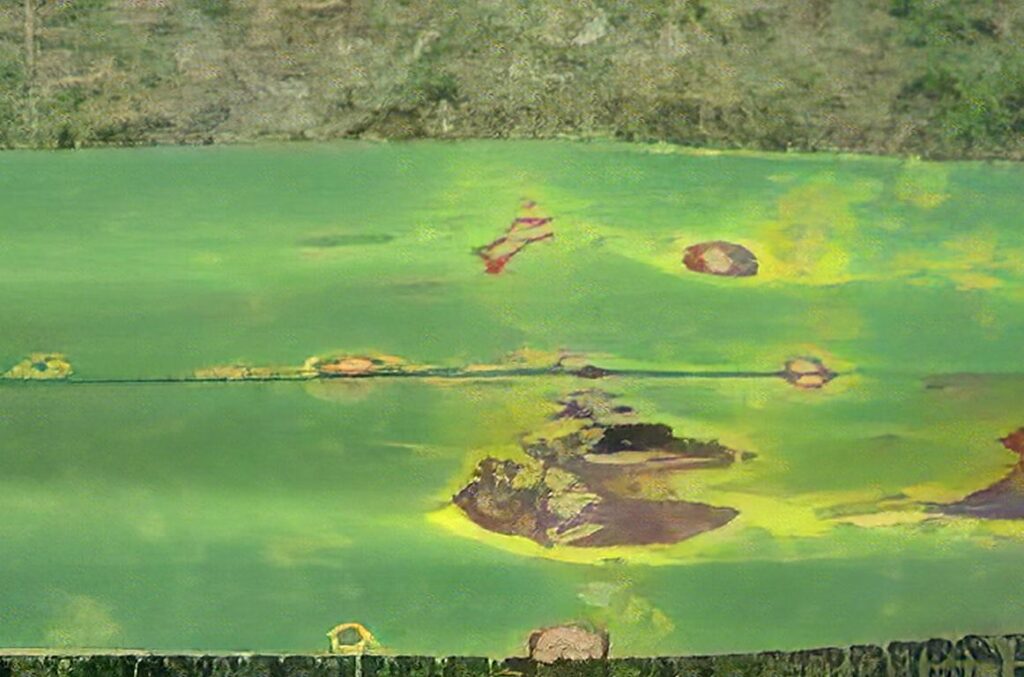
There are also two yellowish leaf spots, one clear and sharp and the other faint and irregular that can commonly be seen on the leaves. They seem to vary both with variety and time of the year.
Pests
One of the serious insect pests of Karuka are longhorn grasshoppers.
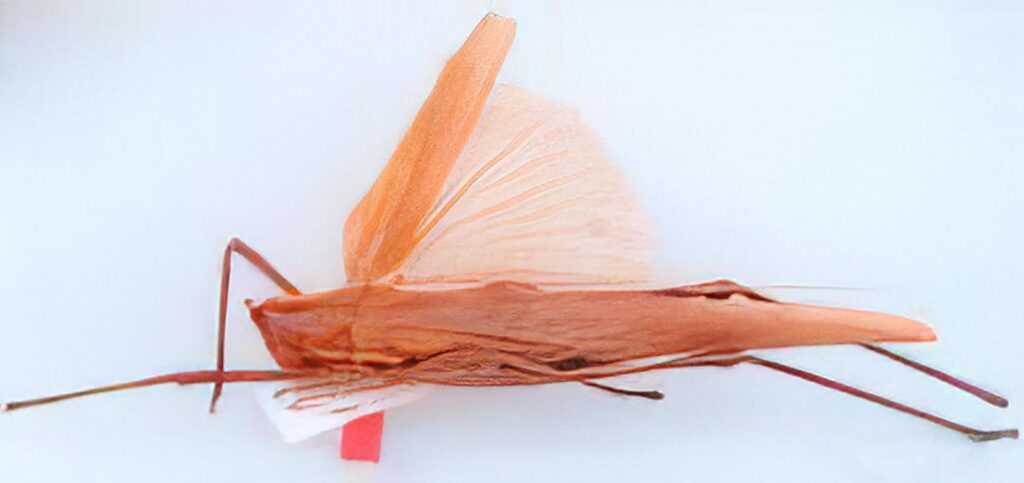
These grasshoppers climb the trees and chew the leaves. Damage can be severe and by eating out the growing point of the tree they can kill the tree. Similar longhorn grasshoppers damage coconuts on the coast. Village people try to reduce the damage by pushing grass and leaves in between the leaves near the crown to stop the insects from getting in.
The grasshoppers lay eggs in the grass and rubbish near the base of the tree. In coconut plantations clearing around the bottom of the tree then spraying, is used. Control of these insects in Karuka has not been studied.
A large black grub also damages Karuka by burrowing into the bunch of fruit and causing it to fall before the bunch is ripe. It eats the spongy layer, and the fruit goes black outside. Occasionally wood boring grubs burrow into the aerial prop roots of Karuka.
A fungal disease has also been recorded growing on Karuka nuts.


Possums are another problem with Karuka. People build platforms up the trunk of the tree to stop possums from climbing up.
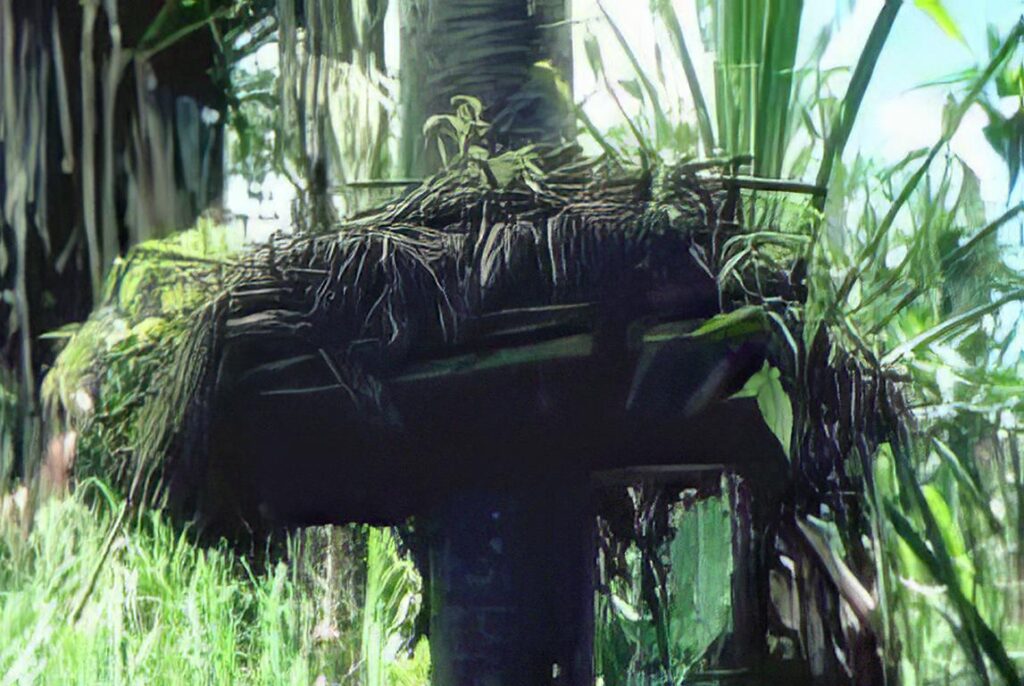
For Karuka nuts stored in houses, rats and cockroaches are the two main problems. These can be controlled by hanging the nuts in the smoky areas above the fire. But if nuts are left too long in this position they start to develop a smoky taste that is not liked.
Storing and using Karuka
Karuka nuts can be harvested before they are fully ripe by climbing the tree and cutting the whole bunch. When this is done, the fruit bunch is cut in half the central pink portion cooked and eaten and the two halves with the outside skin burnt off can be stored in a platform above the fire. These halves can be mumued with hot stones and the nuts are eaten.
Two varieties at least can be eaten fresh without cooking.
The whole fruit bunch can, if desired be stored in damp waterlogged ground for a few months if there are too many fruits to use at one time. These fruits are collected again and cooked and used as if they had just been harvested.
Particularly for nuts harvested ripe, there are two ways to use them. They can be eaten fresh after cooking. Or they can be dried and stored and eaten later without cooking. When the nuts are harvested ripe the individual nuts are pulled out from the central honeycomb-looking spongy material. This central piece can be boiled if only a few are available, or mumued if a lot is available. It is then eaten. The individual nuts can be roasted by tying them along a stick and holding them over a fire.
Drying Karuka nuts
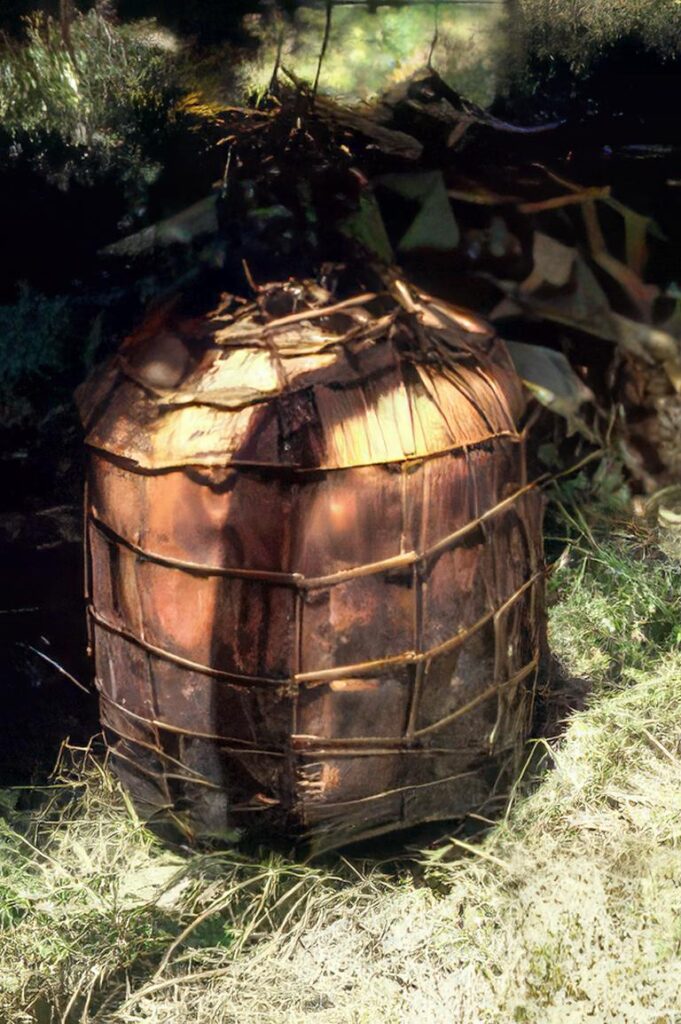
If they are to be stored they are sun-dried. To dry the nuts, they are put out daily in the sun and taken into the house at night. After they are dry they can either be stored in the shell for about 6 months or if it is wanted to store them for 1 or 2 years, they are normally shelled and only the kernels stored. These can be stored by filling up a bamboo, or by making a container of leaves.
Sometimes Karuka nuts that have been harvested ripe are stored for up to 6 months by putting the individual nuts in the ground, separated, and surrounded by soil. When they are taken out they taste like fresh nuts.
Karuka as food

This means Karuka are good quality food.
Amount of food produced
An average Karuka fruit can be about 6 kg weight. It is about 25 cm high and 20 cm across. It contains about 1000 separate nuts. After burning off the outside and removing the stalk, the weight is about 5 kg. A single kernel weighs about 0.5 g. The weight of edible kernels in a fruit is about 8% of the total fresh weight or about 0.5 kg.
Karuka Season
Karuka is seasonal. The season is often about February, but it may vary from December to May. Sometimes there is a second small season about July. Often trees only bear a good crop every second year. Normally any individual branch of a tree only has a bunch of fruit every second year. If it does have two bunches two years in a row, the bunches are usually small.
________________________________________________________________________________________________________________
Text and all photos at this article © Food Plant Solutions. The professional background and contact information of the author of this article can be found here.
.



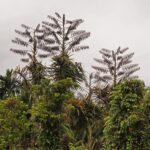
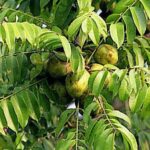
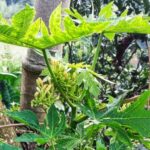
2 comments
Christopher Kassman
Hi,
Wanting to know how to bring this into Australia.
Cheers
Kurt Hoelzl
Hi Christopher,
Bringing in fresh Karuka fruit to Australia is not advisable. If you do, you will have to declare it at customs, but it will not be accepted and destroyed at your expense. Requirement for nuts is as follows:
Commercially prepared and packaged nuts are allowed into Australia if they are one of the following:
* blanched/roasted/fried/boiled nuts
* shelled and tightly vacuum sealed nuts
* nuts packaged in small confectionery tins sealed under vacuum.
Nuts must be declared and may be inspected on arrival. Products that do not meet import conditions will be exported or destroyed at the importer’s expense. For more details you can check following website: https://www.agriculture.gov.au/biosecurity-trade/import/goods/plant-products/importing-plant-products-for-human-consumption#nuts; Karuka nuts however are nowhere mentioned and in my opinion will be destroyed after declaration.
My summary reply to your question therefore is, that you should not try to import Karuka fruit or nuts to Australia. The biohazards for Australia are just too high.